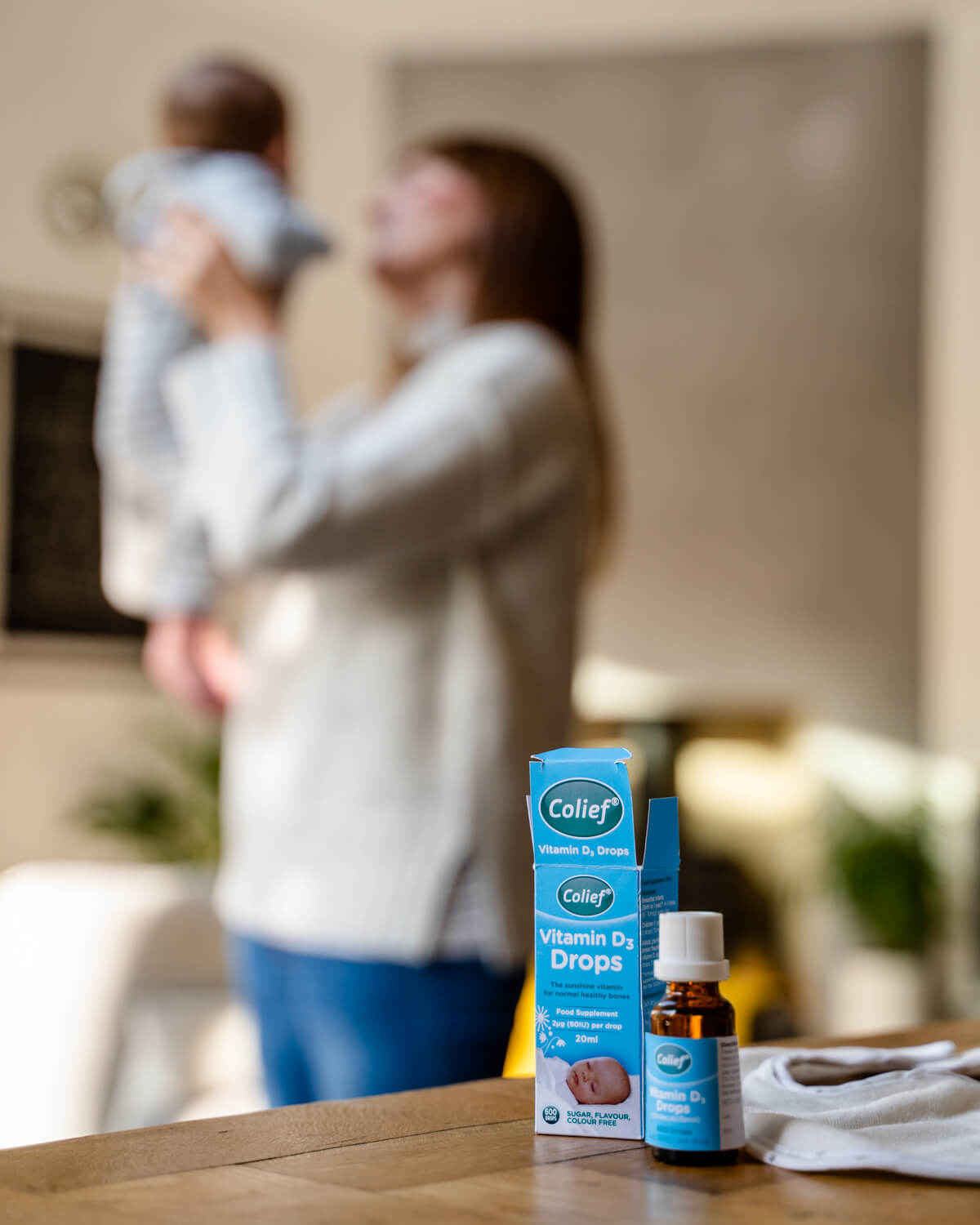Colief Infant Drops
Help ease colic symptoms with Colief
Infant colic can have many causes. In some cases, it is caused by temporary lactose intolerance. This is when babies are unable to fully break down lactose, a complex sugar in breast milk and infant formula. This can cause discomfort commonly known as colic and characterised by lengthy periods of distressed crying. Suitable from birth, Colief Infant Drops are completely natural and help break down lactose into simpler sugars, glucose and galactose, making it easier for your baby to digest their feeds and reducing their discomfort.
Trusted by mums and recommended by healthcare professionals for over twenty years, Colief Infant Drops contains lactase enzyme and can be used every time you feed your baby, either in expressed breast milk or infant formula. At around three to four months a baby’s digestive system will naturally cope better with lactose and usually symptoms will disappear. However, if symptoms persist you can continue to use Colief Infant Drops for as long as it is needed.
Podcast: Understanding Colic & How to Cope
How to use Colief
Colief Infant Drops are suitable to use from birth and can be used whether an infant is breastfed or formula-fed. Always follow the manufacturer’s instructions when preparing your infant’s formula.
| Feeding Options | Number Of Drops | How to Use Colief |
| Breastfeeding with Colief | 4 Drops
   |
|
| Using Colief with formula | 4 Drops
    |
|
| Making formula in advance using Colief | 2 Drops
  |
|
| Using Colief with ready-made formula | 4 Drops
    |
|
Top Tips For Dealing With Colic
1. Although it is distressing, the most important thing to remember if your baby is affected by colic is to remain calm.
2. Introduce a soothing routine around the time of the day when your baby’s colic is usually at its worst, this is typically in the evenings.
3. Keep a log of the times when your baby’s colic is at its worst – you may be able to find a pattern associated with any triggers, allowing you to understand better how to ease the symptoms.
4. Despite the characteristic inconsolable nature of the crying, it may be possible to reduce colic symptoms by trying different soothing techniques, as some babies may respond better to some techniques than others. You may find some of the following helpful:
- Holding the baby during crying episodes
- Wearing baby in a sling
- Gentle motion, such as rocking, pushing them in a pram or going for a drive
- Background noise, such as the vacuum cleaner, hairdryer or washing machine
- White noise
- A warm bath
- Baby massage
5. Try Colief Infant Drops – Trusted by mums and recommended by healthcare professionals for over twenty years, Colief Infant Drops contains lactase enzyme and can be used every time you feed your baby, either in expressed breast milk or infant formula. At around three to four months a baby’s digestive system will naturally cope better with lactose and usually symptoms will disappear. However, if symptoms persist you can continue to use Colief Infant Drops for as long as it is needed.
Latest News
After being tested by 100 parents and an expert panel from a broad range of areas relating to parenting & child, product design and healthcare the National Parenting Product Awards revealed the results of the 2020 Awards.
Colief Infant Drops has won silver in the National Parenting Product Awards in the category of Preferred Baby Treatment for Relief of Colic.

Read Our Blog

How Vitamin D Drops Can Help You And Your Family This Winter
In the winter months we often find ourselves surrounded by grey cold weather, so it’s important to make sure we are still getting our Vitamin D intake. Did you know Vitamin D helps regulate the amount of calcium and phosphate in the body – nutrients that are essential to keep bones, teeth and muscles healthy?

Valentine’s Activities For The Family
Whilst Valentine’s may look a little different this year, that doesn’t mean you can’t get involved in some family fun in crafting the perfect Valentine’s gift for your loved one! Whether that be a partner, family member, friend or someone who has meant a lot to you this past year, why not make their day

Activities To Keep Your Children Entertained This Half-Term
At a loss with how to keep your children entertained this half-term? With most of us having home schooled our children since Christmas, you may be stuck for ideas on how to mix up your activities this half term. Well fear not – we have compiled a list of our top suggestions to ensure you
References:
1. Houghton, LA. Vieth, R. (2006) The case against ergocalciferol (vitamin D2) as a vitamin supplement. http://www.ncbi.nlm.nih.gov/pubmed/17023693.
2. Infant and Toddler Forum (2014) Preventing Vitamin D Deficiency in Toddlers https://www.infantandtoddlerforum.org/media/upload/pdf-downloads/4.7_Preventing_Vitamin_D_ Deficiency_in_Toddlers.pdf.
3. Public Health England and Food Standards Agency (2014) National Diet and Nutrition Survey: results from Years 1 to 4 (combined) of the rolling programme for 2008 and 2009 to 2011 and 2012 https://www.gov.uk/government/statistics/national-diet- and-nutrition-survey-results-from-years-1-to-4-combined-of-the-rollingprogramme- for-2008-and-2009-to-2011-and-2012.
4. Public Health England (2016) PHE publishes new advice on vitamin D. https://www.gov.uk/government/news/phe-publishes-new-advice-on-vitamin-d
5. NHS (2017) Vitamin D. http://www.nhs.uk/Conditions/vitamins-minerals/Pages/Vitamin-D.aspxtings.


